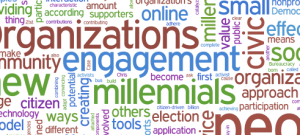 With over 100 million people, the millennial generation will be the determining factor for many businesses in the coming years. Buying behaviors and trends of a generation with an estimated $200 billion in purchasing power is not something to be taken lightly.
With over 100 million people, the millennial generation will be the determining factor for many businesses in the coming years. Buying behaviors and trends of a generation with an estimated $200 billion in purchasing power is not something to be taken lightly.
The generation that was born from around 1984 to 2002 has been deemed the “Millennials,” only after a slew of other names such as generation Y, generation next, and echo boomers. They started the “Occupy Wall Street” movement, are the most ethnically diverse, and regard smart phones, Facebook, and other progressive technology simply as a way of life rather than innovation. We will talk about recent information concerning this generations differentiating ideals, buying behaviors, perceptions, and marketing to a technology driven mind.
There are now more than 30 million millennials who are over 21 and businesses are just starting to see the influence in the marketplace. As researchers survey this segment they seem to come across some common principles that are different from previous generations. One of those principles is gimmicks do not work. With such an abundance of information and choice searching for authenticity has become somewhat troublesome over the years, and as a result has developed a very skeptical group of people. They are able to spot disingenuous advertising. MarketingExperiments conducted a study which compared real photos to stock imagery and the photos of real people out performed the stock photos 95% of the time. Using jargon like cutting edge, easy to use, and one of a kind is another red flag. This generation has grown suspicious of mass media and therefore detest-smoke-and-mirror advertising.
The millennials are looking for credibility and they typically achieve that through peer influence. How do companies convey peer influence? Blogging, social media, reviews, and powerful well developed content. According to HubSpot B2C companies’ blogging generate 88% more leads per month than those who do not. Blogging provides a platform for customers to comment and refute various claims. Social media also provides the ability for feedback and review that can instill a sense of authenticity.
A problem arises when companies lack an audience on their social media pages. While social media has become astonishingly popular, it is still not used as a shopping medium nearly to the degree of search engines and web pages. With this being an issue marketers have to devise ways to drive millennials to their corresponding social media pages. One medium that has seen positive results in this area is direct mail.
A recent survey from marketing firm Epsilon found that for certain categories like insurance and cleaning products, participants ages 18 to 34 preferred to receive marketing information from offline sources. Also, ExactTarget found 75 percent of people ages 25 to 34 have made a purchase resulting from mailing list services. With the overwhelming amount of digital advertising constantly badgering audiences there is a unique value that postcards hold. Millennials receive physical mail less frequently, they recognize that it cannot be thrown together and blasted like e-mail, and it can be used to drive to other mediums like social media with QR codes.
This is the future market for businesses. Companies will need to cut out the fake material, offer platforms for consumer and peer review, and work in different mediums. This generation is more open to try new mediums, but is also quicker to drop it if things do not work out. Be relevant, genuine, and tell them why they should choose you over your closest competitor. The millennials are different, and it is important to discover how to market differently for them.
